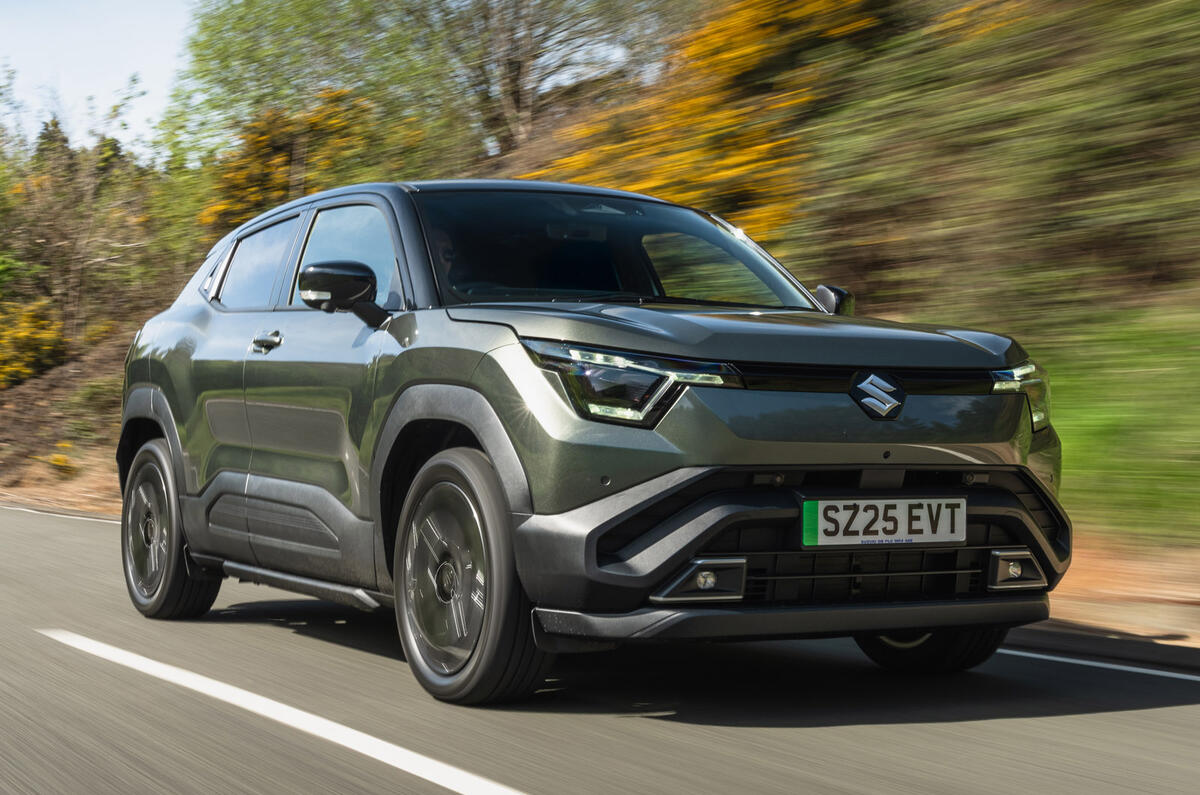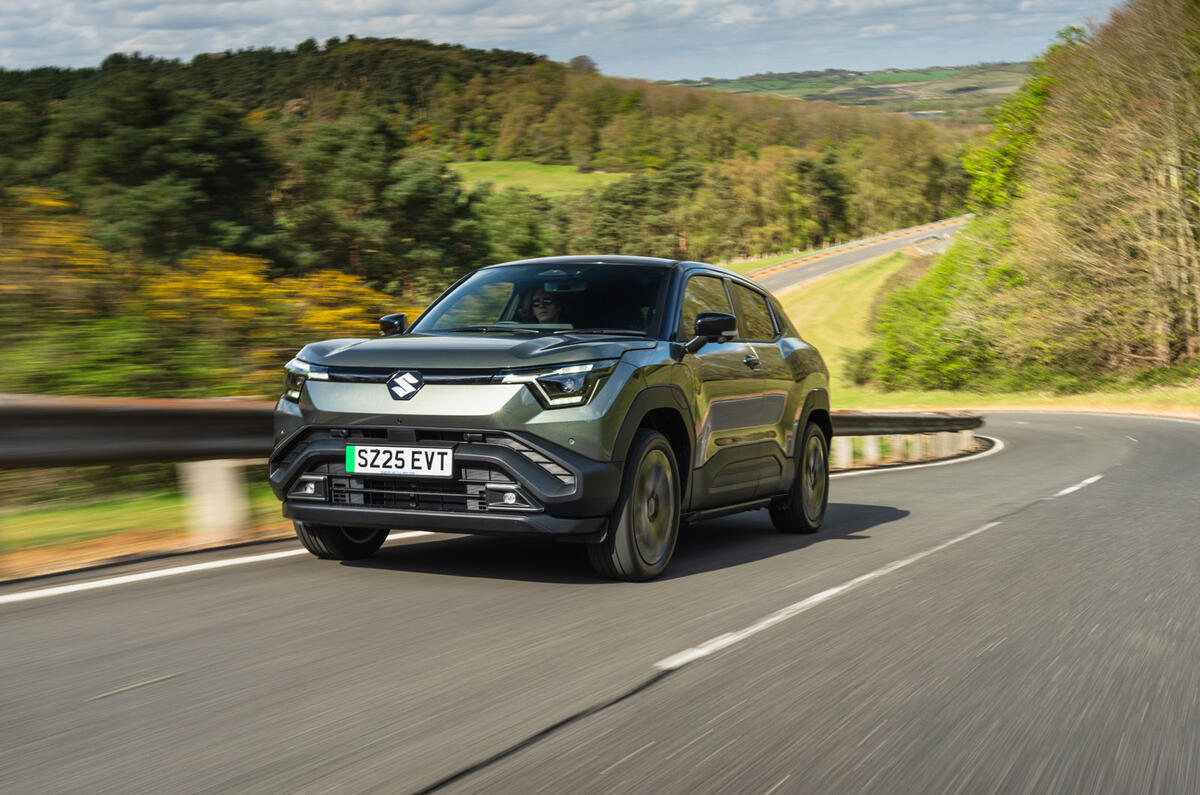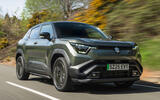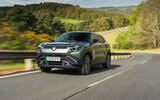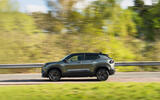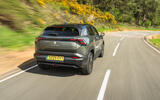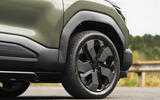Suzuki eVitara review
Suzuki finally comes up with a much-needed EV in the form of a compact crossover

Published:
15 April 2025
- Introduction
- Design & styling
- Interior
- Engines & performance
- Ride & handling
- MPG & running costs
- Verdict
- Introduction
- Design & styling
- Interior
- Engines & performance
- Ride & handling
- MPG & running costs
- Verdict
Find Suzuki eVitara deals
Other Services

You could hardly come up with a clearer example of collateral damage caused by sweeping legislation than the way Suzuki has been affected by the UK’s ZEV mandate.
The noted manufacturer of affordable, compact, efficient cars has had to effectively stop selling some of its cars, not because people didn’t want to buy them but because it was going to be fined otherwise. Is a 60mpg, sub-one-tonne Swift really worse for the environment than a three-tonne SUV? Debatable at best.
Be that as it may, it does seem like an oversight not to have an electric car in your 2025 model line-up, so rather than sulking, it has now come up with exactly that: the Suzuki eVitara.
https://www.drivenbuy.co.uk/autocar?car_make=suzuki&car_model=evitara&review=new&source=https://www.autocar.co.uk/car-review/suzuki/evitara
Verdict

Model tested:
Rating:
Suzuki eVitara
Comfy and no-nonsense, the eVitara translates important Vitara virtues to electric motoring, but question marks remain over price and economy.
Good
Simple and intuitive to drive
Ride comfort
Bad
Small boot
Slow touchscreen
DESIGN & STYLING
Pros
Good battery size
Big wheels give confident look
Cons
Slightly bland styling
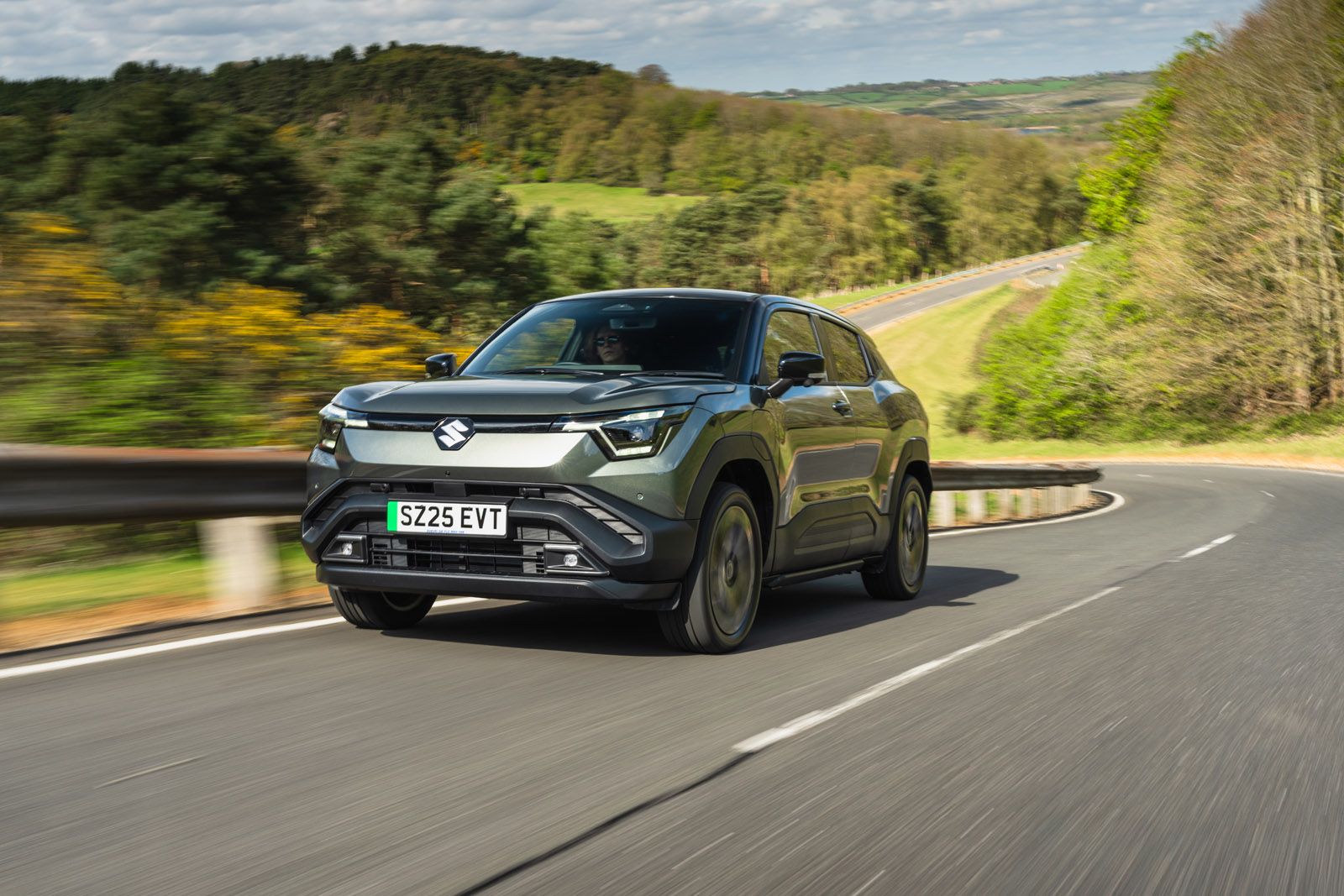
The company has taken its sweet time and has had to use an architecture that’s loosely derived from the one it uses for its piston cars. On the face of it, though, the new eVitara shares little more with its ICE counterpart than a name.
At 4275mm in length, it’s 100mm longer than the Vitara and somewhere in between the Kia EV3 and the Renault Megane E-Tech.
The technical run-down is pretty standard: it’s the usual skateboard platform deal with a choice of two battery sizes: 49kWh or 61kWh. Suzuki hasn’t released figures for the usable capacities yet, but given that it’s using LFP cells, the safety buffer ought to be minimal. The small battery comes with a 142bhp front motor, the 61kWh battery with a 172bhp motor.
In typical Suzuki tradition, the eVitara is also available with four-wheel drive, by way of an additional 64bhp motor on the rear axle of the long-range model, for a total of 181bhp.
The entry-level eVitara has 214 miles of range, but Suzuki expects most people to go for the single-motor 61kWh model, which musters 266 miles. That’s not groundbreaking but is competitive enough: the Skoda Elroq 60 does 265, the 58.3kWh EV3 270 and the Megane 282.
INTERIOR
Pros
Comfortable seats and driving position
Some essential physical controls
Good rear leg room
Rear seats slide and recline
Cons
Bland design and use of gloss black plastic
Slow touchscreen
Uncomfortable rear seating position
Small boot

Where you start to suspect that the eVitara’s platform might still be dragged by some legacy compromises is in terms of interior space. Up front, everything is rosy, with comfortable, multi-adjustable seats that give a very conventional driving position. Rear leg room is comparable with rivals too. However, the floor is very high, which results in a slightly uncomfortable seating position. It’s the boot that really disappoints, at a paltry 244 litres (the aforementioned rivals have more than 440 litres). Sure, you can slide the rear seats forwards, but that still only creates a total of 310 litres.
The cabin is otherwise pleasant, if not exactly upmarket. There’s a splash of colour in some versions and soft-touch materials cover the places that matter, but the design originality of some rivals is absent, and Suzuki has also started tapping into the seemingly endless well of scratch-prone gloss black plastic.
Cabin storage is decent, with big door bins and cupholders, a space under the centre console and a wireless phone charging pad. There are no particularly clever solutions, though.
Something else the eVitara lacks compared with rivals is really up-to-date tech. You might not think you care, but compared with existing Suzukis, the eVitara has also shed a lot of physical controls. The infotainment system is completely new to Suzuki, and it looks attractive enough and works fairly logically. However, it responds painfully slowly, which gets annoying really quickly, since you need the touchscreen to disable the lane keeping assistance and overspeed warning and to turn on the heated seats.
ENGINES & PERFORMANCE
Pros
Progressive accelerator and brake pedal response
Quick enough, both in 2WD and 4WD guise
Cons
No true one-pedal mode
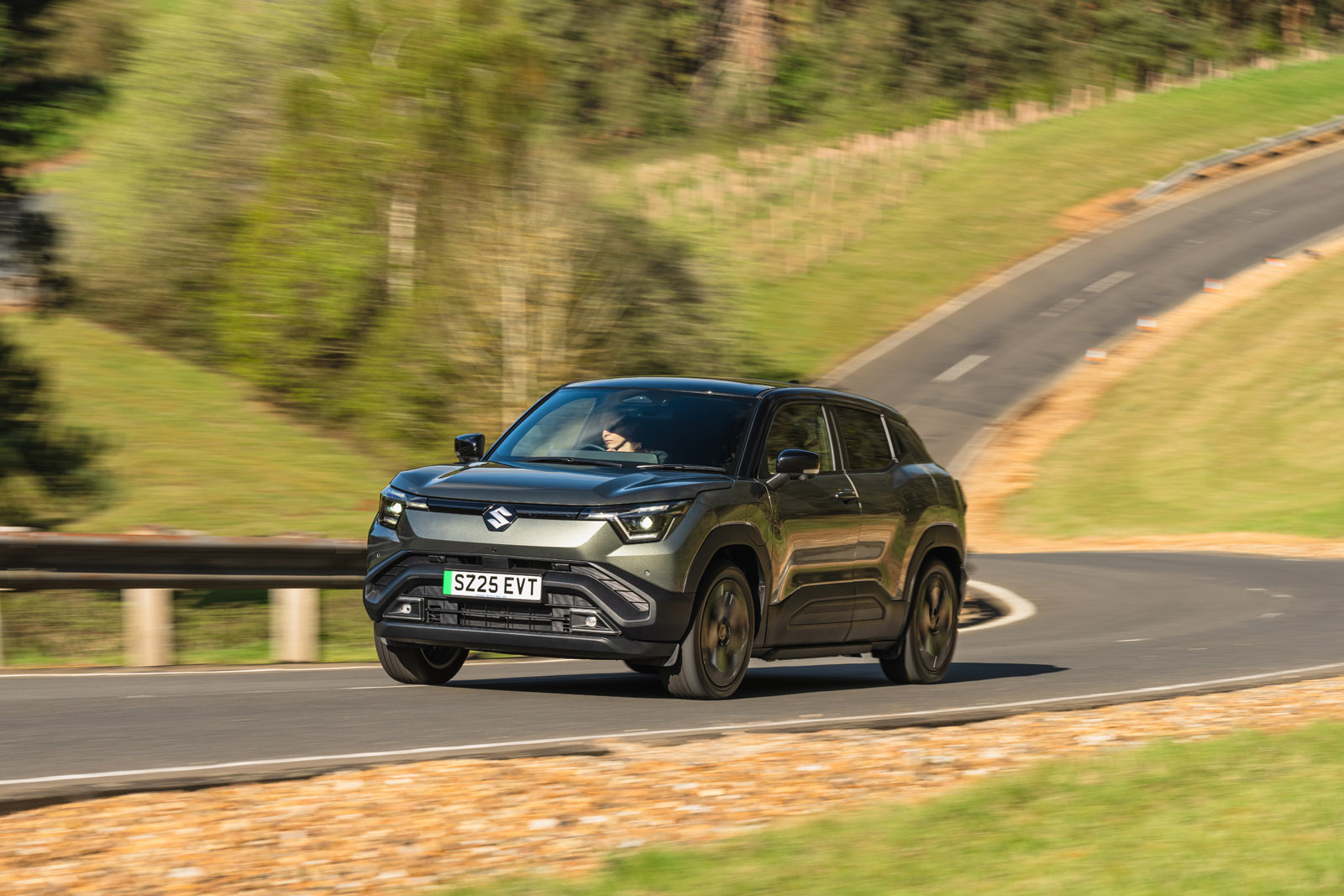
Things improve on the move, even if there are a few caveats. First deliveries aren’t expected until September, which means the car I drove was a late-stage prototype. It wasn’t road-legal so was confined to Millbrook Proving Ground. Not ideal, but there’s a reason companies come here to develop cars: the variety of surfaces and simulated roads do give a good idea of what a car will be like in the wild.
With 172bhp, the eVitara is usefully quicker than Stellantis EVs like the Jeep Avenger and Peugeot e2008, and driveability is well-resolved too. The accelerator is progressive, whatever regen mode you’ve picked. There are a couple to choose from in a touchscreen menu plus a ‘one-pedal’ mode that’s activated with a button in the centre console. Annoyingly, the latter doesn’t bring the car to a complete stop, which makes it rather pointless. Luckily, the brake pedal (a by-wire set-up) is firm and progressive.
While the dual-motor, four-wheel-drive version adds only 9bhp, its torque uplift is more significant: 84lb ft. As a result, it shaves 1.3sec off the 0-62mph time. Nice to have, but it’s not essential, because the FWD car has enough performance for its mission as a sensible EV.
RIDE & HANDLING
Pros
Ride comfort
Steers and handles competently and predictably
Cons
Not exactly fun
Wind noise at speed
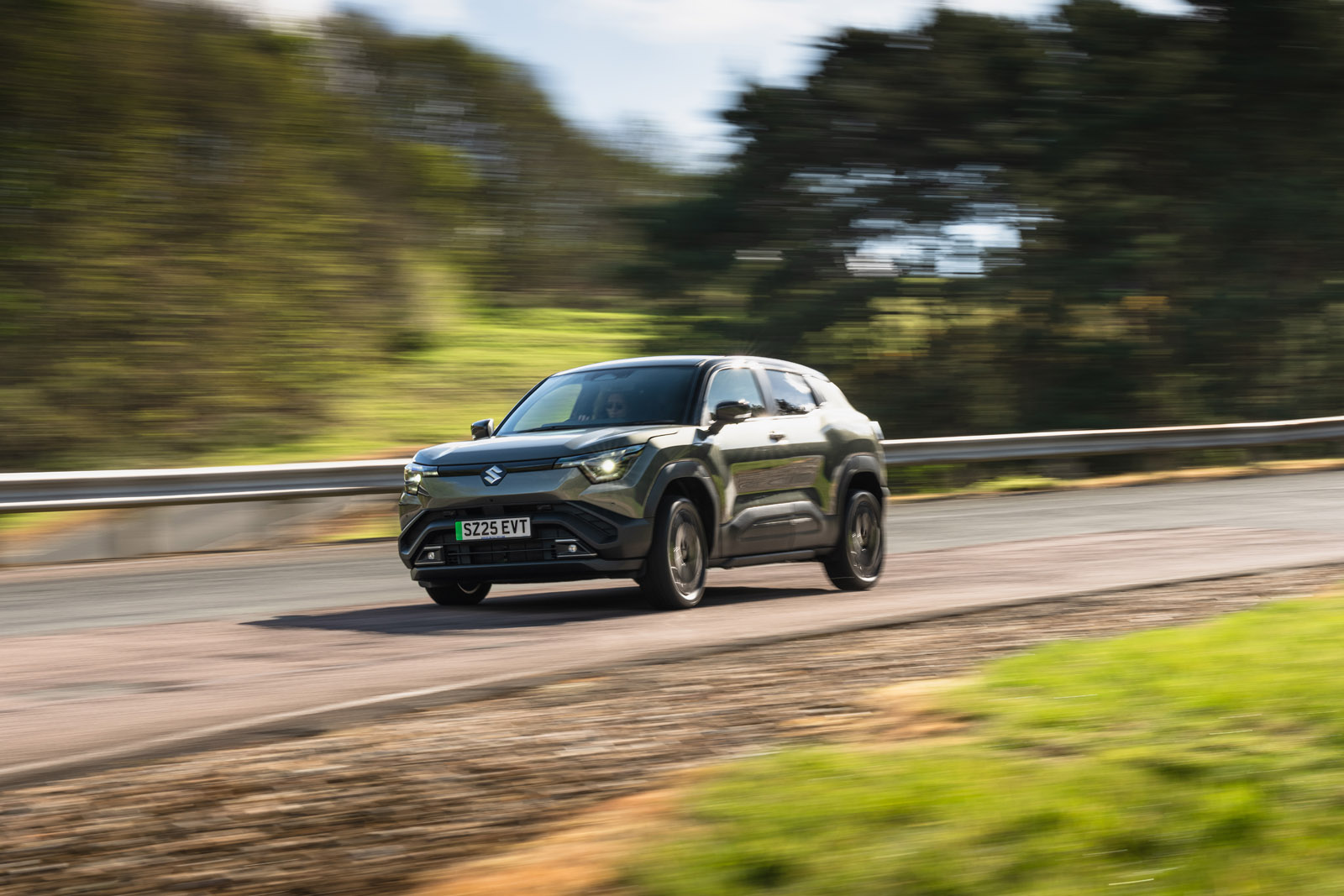
Although this is a Suzuki development that will later be rebadged as a Toyota Urban Cruiser, it feels remarkably Toyota-y to me. All the controls are progressive and intuitive, to the point where you just don’t think about them. There’s little ‘surprise and delight’ on offer, but for a sensible electric crossover, that’s largely a good thing.
The suspension is on the softer side, and while it can feel a little underdamped at times, it’s mostly very absorptive and irons out bumps big and small, gradual and sharp. You’re not short of grip or turn-in response either.
I tried both the front-wheel-drive and Allgrip-e versions of the 61kWh car, and on dry roads, there’s next to no difference. The 4WD version has marginally heavier steering and the traction control (which is conservative but smooth) has a bit less work to do when you peel out of a junction. The only reason to buy the Allgrip-e model is if you’re going to be driving in very slippery conditions a lot.
One thing that was impossible to test fully at Millbrook, with its absence of traffic, were the ADAS systems. Everything is fitted as standard, so even the entry-level Motion trim gets adaptive cruise control with lane following, blindspot monitoring and front and rear parking sensors. The eVitara has a prominent camera pod on the steering column for the driver monitoring, but the system seems well calibrated.
MPG & RUNNING COSTS
Pros
Battery warranty of up to 10 years
Cons
Pricing and real-world efficiency are still unknown
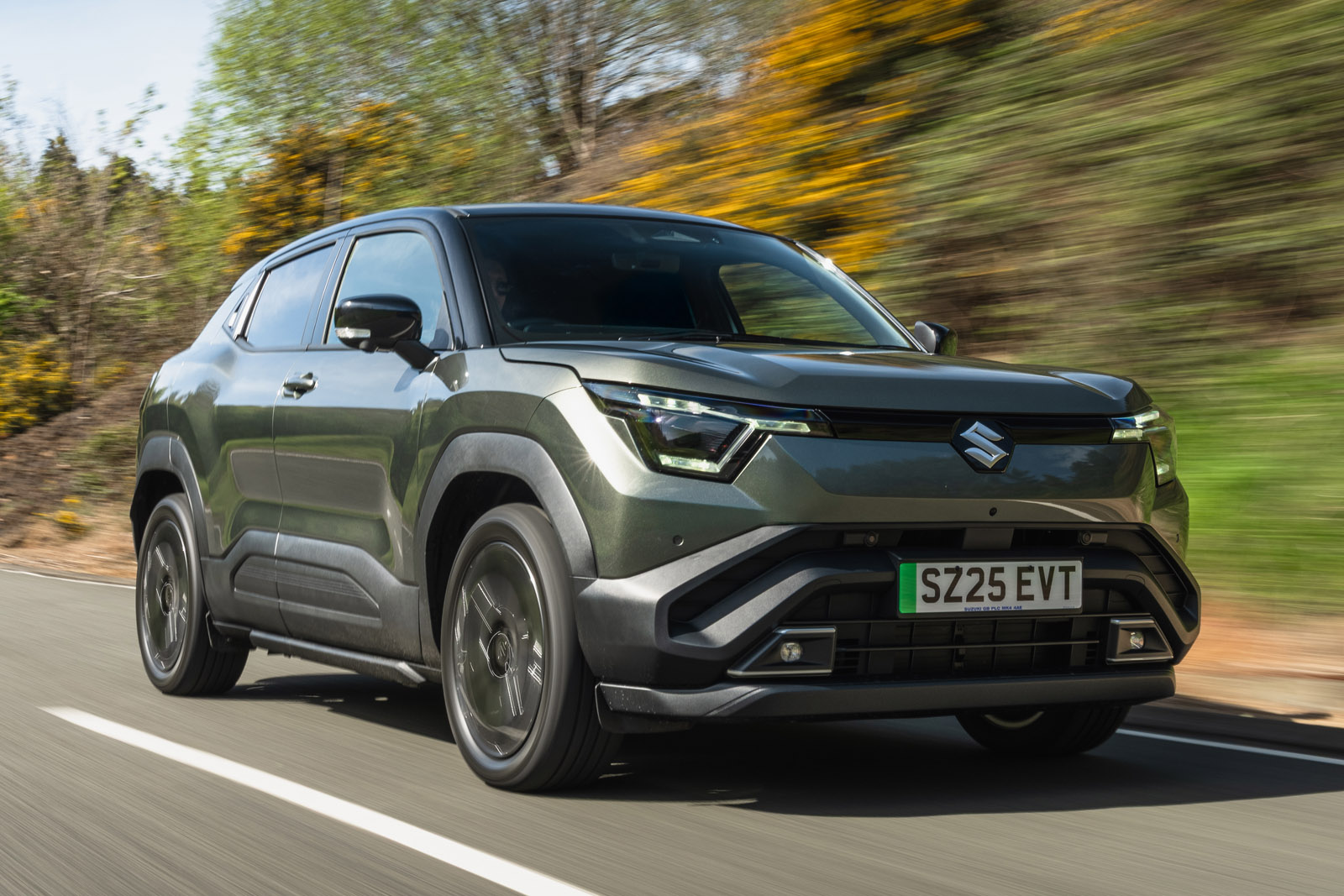
The other caveat of this being a very early drive is that it will be a while before prices are announced. Rivals are priced at anything from £30,000-£40,000 for an equivalent range and level of equipment, which doesn’t really narrow it down.
We will also need more time in the car to confirm real-world range and efficiency. At 4.1mpkWh, the eVitara returns the same energy efficiency on the WLTP cycle as most rivals, but on our test loop, the trip computer never showed more than 3.0mpkWh. Let’s hope the calibration on the prototypes was out. A heat pump is standard and Suzuki claims that the range will drop by only 9% in freezing weather.
The battery can be preconditioned for fast charging, but still a 10-80% charge time of 45 minutes is much longer than the EV3’s 29 minutes.
Suzuki has a good reputation for its dealer support and is introducing a Toyota-style 10-year warranty (actually a three-year one that increases by one year with every annual service) that extends to the battery.
VERDICT

Verdict

Model tested:
Rating:
Suzuki eVitara
Comfy and no-nonsense, the eVitara translates important Vitara virtues to electric motoring, but question marks remain over price and economy.
Good
Simple and intuitive to drive
Ride comfort
Bad
Small boot
Slow touchscreen
The lack of pricing information is a little problematic, because I suspect the eVitara will stand or fall by how much it costs.
While it’s generally pleasant and inoffensive, it’s not class-leading in any way. As a result, if it’s priced on par with an EV3, Elroq or Megane, it would be hard to recommend. As an option on the more affordable end of the market, though, pleasant and inoffensive would be just fine.



